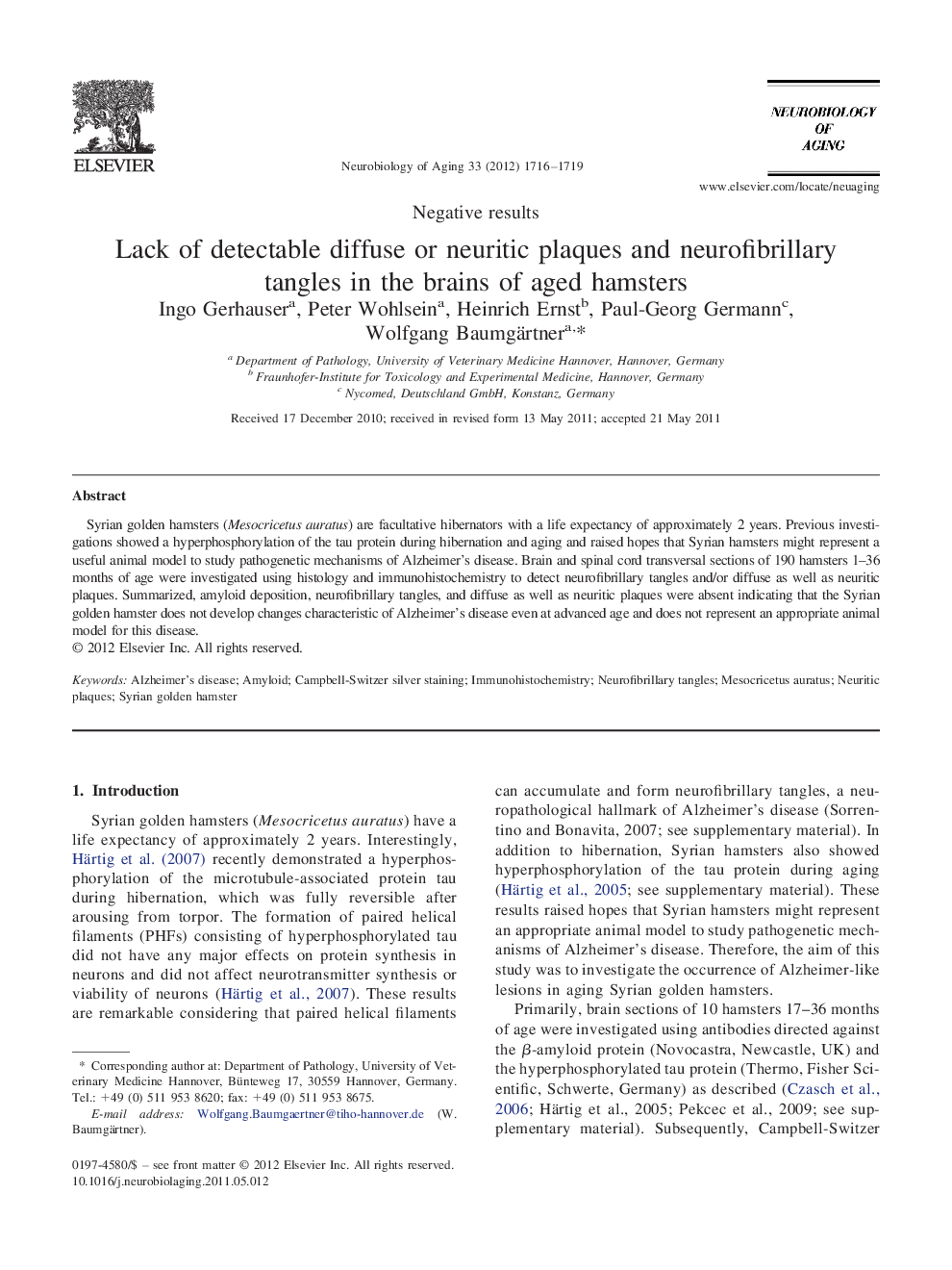| Article ID | Journal | Published Year | Pages | File Type |
|---|---|---|---|---|
| 6808420 | Neurobiology of Aging | 2012 | 4 Pages |
Abstract
Syrian golden hamsters (Mesocricetus auratus) are facultative hibernators with a life expectancy of approximately 2 years. Previous investigations showed a hyperphosphorylation of the tau protein during hibernation and aging and raised hopes that Syrian hamsters might represent a useful animal model to study pathogenetic mechanisms of Alzheimer's disease. Brain and spinal cord transversal sections of 190 hamsters 1-36 months of age were investigated using histology and immunohistochemistry to detect neurofibrillary tangles and/or diffuse as well as neuritic plaques. Summarized, amyloid deposition, neurofibrillary tangles, and diffuse as well as neuritic plaques were absent indicating that the Syrian golden hamster does not develop changes characteristic of Alzheimer's disease even at advanced age and does not represent an appropriate animal model for this disease.
Keywords
Related Topics
Life Sciences
Biochemistry, Genetics and Molecular Biology
Ageing
Authors
Ingo Gerhauser, Peter Wohlsein, Heinrich Ernst, Paul-Georg Germann, Wolfgang Baumgärtner,
